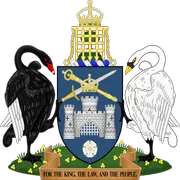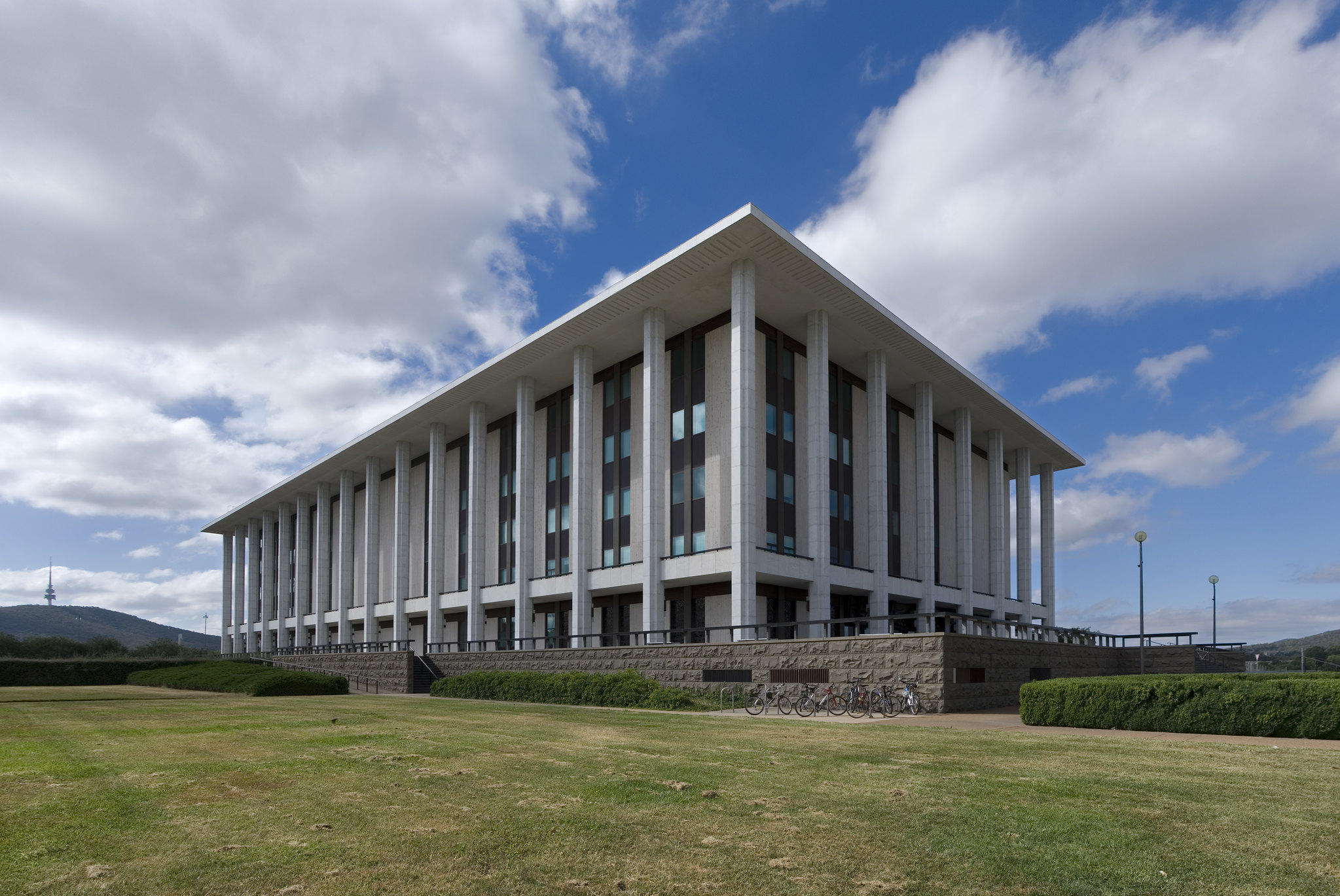The National Library of Australia, located in Canberra, is the country’s largest reference library and a leading cultural institution. Established in 1960, it serves as Australia’s primary repository of published and unpublished materials, including books, manuscripts, photographs, maps, and digital resources. The library’s extensive collection focuses on Australian history, culture, and society, while also housing significant international works. As a legal deposit library, it receives copies of all materials published in Australia. The National Library plays a crucial role in preserving Australia’s documentary heritage, providing research services, and promoting literacy and learning through various programs and exhibitions. Its iconic building, situated on the shores of Lake Burley Griffin, is a prominent landmark in the nation’s capital.
The National Library of Australia, located in Canberra, is a treasure trove of knowledge and history, housing an impressive collection of rare manuscripts and historical documents that offer a unique glimpse into Australia’s past and its place in the world. This vast repository of information is not just a resource for academics and researchers but also a fascinating destination for curious visitors eager to explore the nation’s rich cultural heritage.
Among the library’s most prized possessions are the original journals of Captain James Cook, which provide a firsthand account of his voyages to the Pacific and his encounters with the Australian continent. These meticulously preserved documents offer invaluable insights into the early days of European exploration and the first interactions between Europeans and Indigenous Australians. Alongside Cook’s journals, visitors can also find the logbooks of other notable explorers, such as Matthew Flinders and William Bligh, each telling its own tale of adventure and discovery.
Moving beyond the era of exploration, the library boasts an extensive collection of colonial-era documents that shed light on the early days of European settlement in Australia. These include official correspondence, land grants, and personal letters that paint a vivid picture of life in the fledgling colonies. Of particular interest are the records of the First Fleet, which detail the arduous journey of convicts and settlers from England to establish the penal colony that would eventually become Sydney.
As we delve further into Australia’s history, the library’s collection of rare manuscripts extends to significant political and social documents. One such treasure is the original copy of the Australian Constitution, a cornerstone of the nation’s legal and political framework. This document, along with other records from the Federation era, provides a fascinating look at the birth of modern Australia and the debates that shaped its governance.
The library’s holdings are not limited to Australian history, however. Its rare book collection includes ancient manuscripts from around the world, some dating back to the Middle Ages. These beautifully illuminated texts, often adorned with intricate illustrations and gold leaf, offer a window into the art and scholarship of bygone eras. From religious texts to scientific treatises, these rare books showcase the evolution of human knowledge and the art of bookmaking.
For those interested in more recent history, the library houses an impressive array of wartime documents, including letters, diaries, and official records from both World Wars. These poignant artifacts provide personal accounts of soldiers’ experiences and offer insights into the impact of global conflicts on Australian society.
The National Library of Australia is constantly working to preserve and digitize its rare manuscripts and historical documents, making them more accessible to researchers and the public alike. This ongoing effort ensures that these fragile pieces of history are protected for future generations while also allowing for wider access through online platforms.
Visitors to the library can explore many of these rare items through rotating exhibitions and special displays. The library’s knowledgeable staff are always on hand to provide context and answer questions, making the experience both educational and engaging. For those unable to visit in person, the library’s extensive online resources offer virtual access to many of its rare and historical collections.
In conclusion, the rare manuscripts and historical documents housed at the National Library of Australia offer a unique and invaluable resource for understanding Australia’s past and its connections to the wider world. From the earliest days of European exploration to the formation of modern Australia, these carefully preserved artifacts provide a tangible link to history that continues to inform and inspire visitors from all walks of life. Whether you’re a serious researcher or simply curious about Australia’s rich heritage, the National Library’s collection of rare manuscripts and historical documents is sure to captivate and enlighten.The National Library of Australia is a vital institution that serves as the country’s preeminent repository of knowledge and cultural heritage.
Located in Canberra, it houses an extensive collection of books, manuscripts, photographs, and digital resources that document Australia’s history and contemporary life. The library plays a crucial role in preserving and providing access to information for researchers, scholars, and the general public. Through its various programs, exhibitions, and digital initiatives, the National Library of Australia continues to adapt to changing technologies and user needs, ensuring that it remains a relevant and indispensable resource for future generations. As a cornerstone of Australia’s intellectual and cultural landscape, the National Library stands as a testament to the nation’s commitment to learning, discovery, and the preservation of its unique identity.

